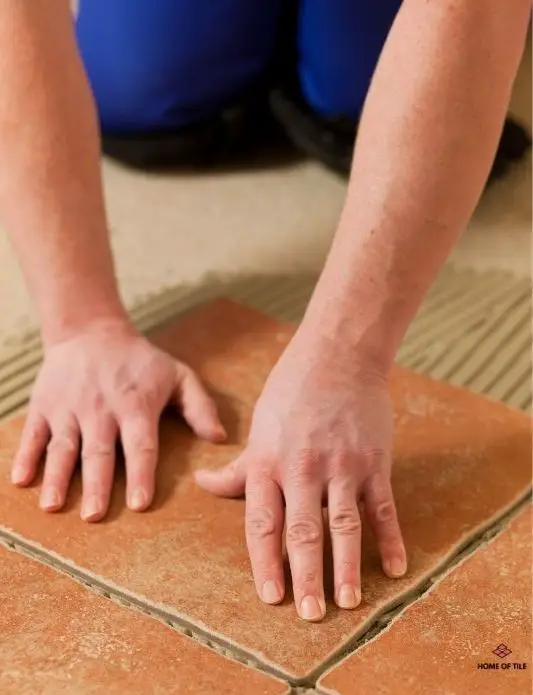Are Ceiling Tiles Flammable. 6 Things You Should Know
Ceiling tiles aren’t generally flammable, particularly porcelain and ceramic tiles. Most housing tiles are made of inert materials, which don’t undergo significant physical change and don’t affect other materials.

Contents
What Happens If You Burn Ceiling Tiles?
Depending on the materials a building is made of, fire is always a risk, regardless of its fire alert and extinguishing systems.
If you burn ceiling tiles, the fire won’t easily spread because they’re designed to be non-combustible. In addition, several ceiling tile varieties are made with natural materials (such as clay and stone), and these cannot combust. However, if you remove a ceiling tile, you increase the chances of the fire spreading.
Some ceiling tiles are flammable, but you can make them more fire-resistant to slow the spread of a fire if it does occur.
Unfortunately, fire retardant materials can still sustain serious damage from a fire. Examples of fire damage include:
- Staining or blackening
- Holding a smoky, unpleasant smell
- Excess water or extinguishing agent leftover from putting out the fire
- Cracking
Even if ceiling tiles don’t burn, they’ll most likely need to be replaced after a serious fire due to the above reasons. This is especially true if the damage leaves the ceiling exposed, making it vulnerable to another fire.
Which Ceiling Tiles Are Fire Rated?
Most ceiling tiles actually make a ceiling more effective in preventing or slowing the spread of fire, but some are combustible and absolutely should not be trusted to be fireproof. The question is, what tiles are fire rated?
Though many types of ceiling tiles aren’t combustible, no tiles are technically fire rated. They can be used in tandem with the ceiling construction and using a particular grid layout may strengthen the ceiling’s fire rating.
That said, not all tiles are created equal regarding fireproofing and general safety. Below is a list of the safest and most heat-resistant tiles to use on a ceiling:
- Ceramic
- Porcelain
- Clay
- Stone
- Metal
The bottom line is that the more natural the tile, the less likely it is to cause trouble in the event of a fire. Ceramic tiles are even known to be one of the best options for tiling the inside of a fireplace.
Avoid tiles containing PVC and resins that would cause a fire hazard in other, more artificial tiles and other household decors. Using non-flammable, non-solvent adhesive to apply these tiles is also strongly recommended.
Are Styrofoam Ceiling Tiles Flammable?
Ceiling tiles aren’t typically considered a fire hazard. However, can the same be said for tiles made out of materials known to be flammable?
Styrofoam is flammable and highly combustible. Though these ceiling tile types are typically treated, so they’re fire retardant, they’re still flammable and become a higher risk the older they are. Because of this, it’s highly recommended not to use styrofoam ceiling tiles if you can use a different material.
Polystyrene tiles are also a major risk to the health of anyone in a room at the time of a blaze, as they release noxious fumes when burnt and can drip and burn people in the room.
Inhaling these fumes and being hit with burning plastic will almost certainly cause damage that lasts long after the fire itself. People inhaling these gases can expect an attack on their nervous system and lungs.
Does Painting Ceiling Tiles Make Them a Fire Hazard?
Painting ceiling tiles can give them a new lease on life and add that missing pizzazz to any room. If you’ve ever wondered whether paint increases an item’s flammability, here’s your answer.
Painting ceiling tiles makes them a fire hazard, but only if you use oil-based paints. Other paints (such as water-based or emulsive wall paint) aren’t flammable. That said, using flammable paint raises the risk of fire damage only slightly.
If your ceiling tiles have paint thinner or remover residue, they may be more flammable.
Review the below table for various paint types and how they are categorized in terms of flammability according to OSHA:
Paint | Flammable | Risk Level |
Water-based | No | Low |
Emulsive wall paint | No | Low |
Oil-based | Yes | High |
Paint remover | Yes, depending on the classification | High, depending on the classification |
Paint thinner | Yes | High |
Note: Not every paint remover is highly combustible. There are four different classifications for paint remover which you should check before purchasing:
- Non-flammable
- Combustible
- Flammable
- Extremely flammable
OSHA lays out some other materials used in painting that pose a health risk aside from fire concerns:
- Silica: Products containing silica release particles into the or when sanded or ground. Unfortunately, silica is widely used in masonry and concrete and requires lengthy safety precautions.
- Lead: Old lead-based paint and metals release lead dust when sanded or ground which can sit in the body’s system, seemingly non-existent, for years before causing damage.
Regular wall paint used in the home is, more often than not, a water-based solution. This poses little to no fire risk unless stored in large quantities, which is an unlikely situation for the average DIYer to be in.
However, it’s always a good idea to research the particular paint you buy before applying it if you’re especially concerned about fire safety.
● How to Fireproof Ceiling Tiles
As the above explanation shows, paints are either flammable, combustible, or non-flammable. There are exceptions in paints that are flame-retardant or intumescent.
Intumescent coating is frequently used in construction and coats everything from masonry to metal. As well as avoiding highly flammable paint for your ceiling tiles, it’s recommended that you coat them in a flame-retardant solution.
Regular cleaning and checking your tiles for gaps and breakages are vital in maintaining fireproof integrity.
Routine cleaning not only makes your surroundings look great but also reduces combustibility and the release of dangerous fumes and dust in the event of a blaze.
Are Missing Ceiling Tiles a Fire Hazard?
A lesser-known purpose of ceiling tiles is to slow the spread of smoke and fire if a fire breaks out in a building.
Missing ceiling tiles are a fire hazard because they create gaps for smoke and gases to accumulate above the detection line. This creates the risk of the fire system not detecting a fire emergency, putting all the building’s occupants in danger.
Taking tiles down for repairs or replacement is fine, but it’s crucial to replace them immediately after the necessary work has been done.








